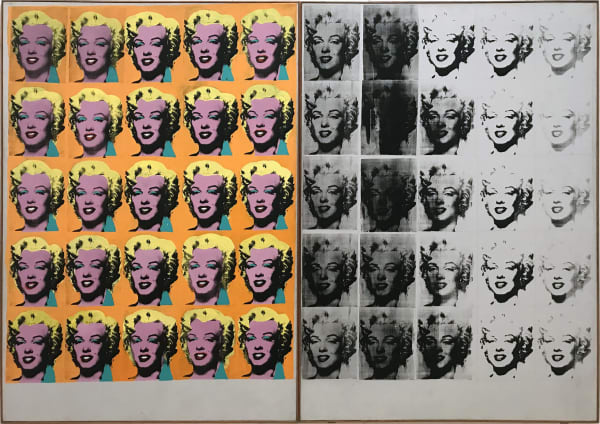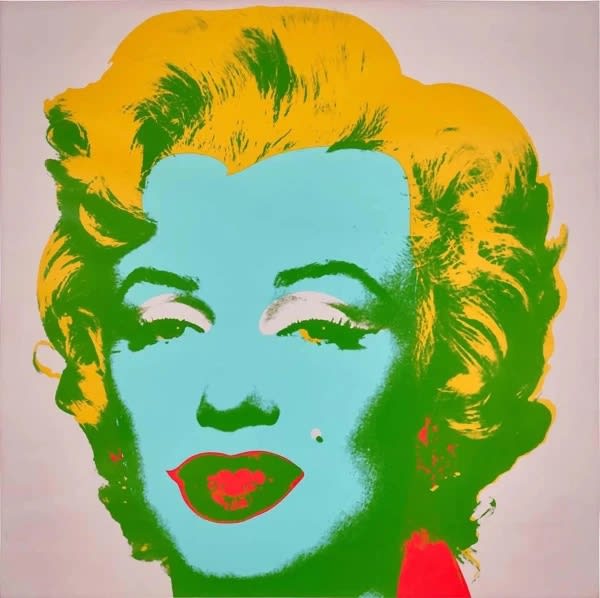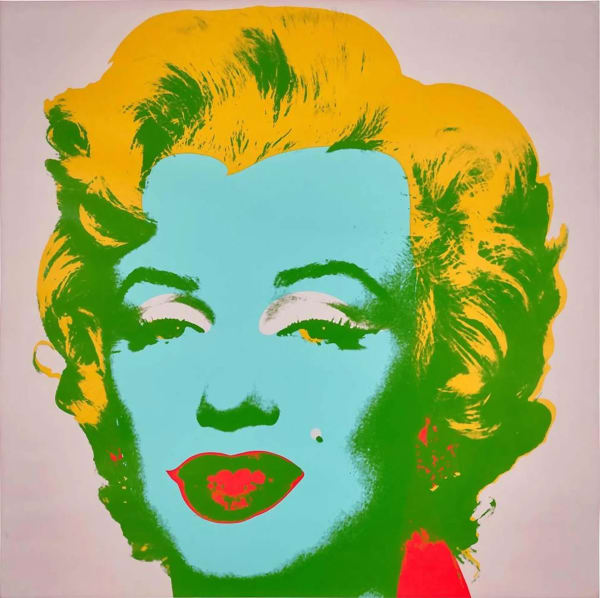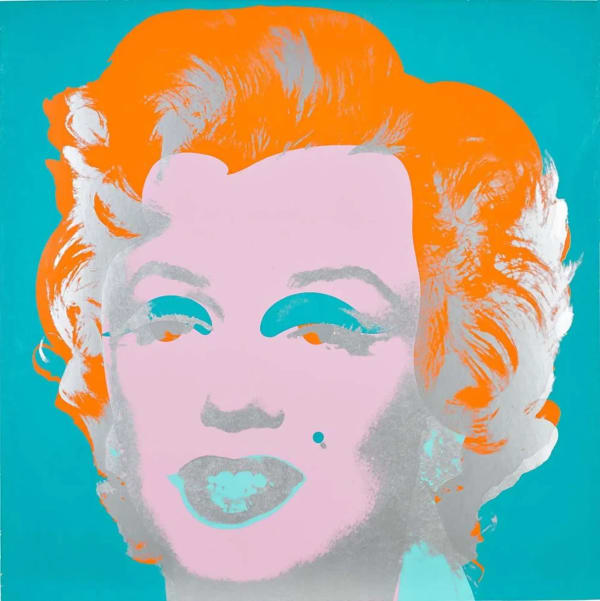The first of his screen prints, Andy Warhol's Marilyn Monroe series (created in 1967) are motley variations of the iconic actress. Except Andy Warhol's Marilyn Diptych is half colorless, perhaps in response to her tragic end. Andy Warhol created three Marilyn Monroe screen print portfolios in 1967, a few years after the actress passed away in 1962. The portfolio of 10 screen prints was one of the first prints Warhol printed and distributed through Factory Additions, New York. The name of this company references Warhol’s studio known as “The Factory”.
For Warhol, the actress was already a familiar subject. He initially began depicting Marilyn Monroe in the pop art silkscreen Marilyn Diptych, 1962, shortly after her death. The Marilyn Diptych is a silkscreen painting which contains fifty images of the actress, all taken from the 1953 film Niagara. Warhol explained:
“In August 62 I started doing silkscreens. I wanted something stronger that gave more of an assembly line effect. With silkscreening you pick a photograph, blow it up, transfer it in glue onto silk, and then roll ink across it so the ink goes through the silk but not through the glue. That way you get the same image, slightly different each time. It was all so simple, quick and chancy. I was thrilled with it. When Marilyn Monroe happened to die that month, I got the idea to make screens of her beautiful face, the first Marilyns.”
Half of the Marilyn diptych was heavily pigmented while the other half was colored in black and white. Overall, the work was a commentary on the relation between Monroe’s life and death. The format of the Marilyn Diptych, 1962, mirrors the form of a Christian work of art depicting the Virgin Mary on one side and the crucified Jesus on the other. The comparison with the religious work references the idolization of Marilyn Monroe.
Warhol’s Marilyn Monroe, 1967 portfolio is seen as an extension of the initial silkscreen painting. Each image from the portfolio is sized 36 x 36 inches, considerably large and a closer crop of Monroe’s face. Each print is vibrantly colored to reflect her vivacious personality. In many of the prints, her iconic lips are boldly colored a deep red. Many of the prints also emphasize her platinum blonde hair by adding variants of yellow. In one of the prints, the actress is colored in silver and black, a stark departure from its vivid counterparts. This brings to mind the effect of watching the actress on the cinema screen in black and white. The dark colors are also a somber reminder of the actress’s passing. The colors ultimately bring to life Marilyn Monroe’s iconic status and celebrity glamour. By creating repetitive imagery, Warhol evokes her ubiquitous celebrity status.
Discover Andy Warhol original art for sale and contact info@guyhepner.com for latest availabilities. Looking to sell? speak to our team on how to sell andy warhol prints.















